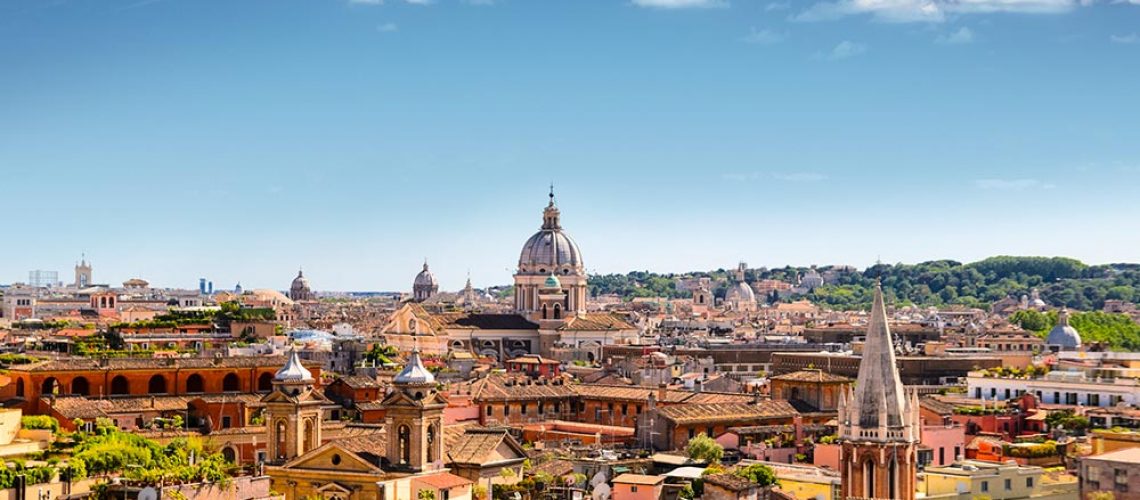July and August are the hottest months in Italy – and temperatures rise the further south you get. We have gathered a few simple pointers to help you have the best vacation time anyway:
Check the weather of your destination
There is barely a spot on earth for which you cannot find an almost perfectly reliable 10-day weather forecast. So look ahead and check what weather to expect at your destination. Make sure you don’t just look at temperatures but also at humidity and wind.
When booking your accommodation
If you are planning on a city holiday, make sure your hotel is in a cooler part of the city, or on the outskirts, or – if none of these are an option – at least has air conditioning, which is not a given in Italy. Many hotels and B&B’s have adapted to international traveler’s expectations for on-demand cool air, but not all.
Pack the right clothing
The right clothes will make a huge difference. Pack lightly (added bonus of not schlepping too heavy a suitcase), and bring light-colored and non-stick cotton, linen, or natural fibres clothing. Avoid dark clothes and synthetic fibers that can also cause annoying allergies when it is hot. You should still dress decently, it is not seen as acceptable for men to be topless or women to wear only bikini tops away from the beaches. Remember to bring light long pants and a cotton shawl for sightseeing – many churches and religious sites won’t let you in if your shoulders or knees are not covered.
Bring your hot weather kit
These few items are essential to making your sightseeing experience as pleasant as possible:
- Carry a refillable water bottle – there are perfectly safe drinking fountains all over Italy so you can refill
- Bring a small bottle of suntan lotion that easily fits in your purse or daypack
- Wear a hat, or, as an alternative, you may want to bring a light-colored umbrella that can double as a parasol
- Carry a fan – there is nothing like being able to fan yourself even on a stuffy bus or in a museum – you’ll blend right in, most Italian ladies and many men carry a fan, all summer
- Bring a bottle of mosquito repellent – you’ll be glad you have protection when you are visiting humid areas (like Venice)
Follow local customs
It’s a great idea to “when in Rome, do as the Romans do” (and likewise in other localities!). In the summer, most activity takes place in the morning hours and at night. Italians won’t be out much between noon or sometimes even 11:00 am and about 5:00 pm or 6:00 pm (again, times vary according to latitude). So, we suggest you plan to get up early and do your sightseeing in the morning, then head back for a light lunch and rest in a shady, cool spot, like at your hotel. Do some more sightseeing after 5:00 pm, when the sun is less intense (and the light is better for taking beautiful photos!). Be aware that museums and churches tend to be open in the morning hours and not after 5:00 pm or 6:00 pm – make sure you check ahead to avoid disappointment. Late afternoon and evenings are a great time to simply stroll through the cities, enjoy a gelato or aperitivo, look at all the architecture and people-watch. The further south you get, the later the activity picks back up in the afternoon. Accordingly, dinner-time is later and though bigger centers have often adapted to tourists wanting to eat early, you’ll share the restaurants with other foreigners and not with Italians. Why not opt for a later, but lighter evening meal? You’ll experience real Italian food culture if you join the eating rhythms, too.
And – don’t plan too much. It’s simply not healthy to be too frenetic in hot weather. Plan for a leisurely visiting schedule – you’ll probably enjoy your holiday more and tire yourself much less.
Here are a couple more tips – walk on the shady side of the street, and if you take the train or bus, figure out which side the sun will be on and sit on the other one.
Food and drink
- Drink plenty of water (at least one and a half liters a day) to hydrate skin and body.
- Follow a low calorie diet and privilege the consumption of fruits and vegetables as they contain a large percentage of water.
- Eat light meals: white meat and fish, limit carbohydrates and avoid fat-rich foods.
- Limit the consumption of coffee, spirits, and carbonated beverages – they have a diuretic effect and increase fluids being expelled from the body – so they won’t be available for the cooling process.
- Avoid beverages that are too hot or too cold, as they increase body temperature in the first case, and can cause cramps and congestion in the second – although a delicious Italian gelato will bring your core temperature down.
Alarm signals for your health – the first signs of suffering heat are:
- Sense of fatigue
- Weakness
- Headache
- High body temperature
- Intense thirst
- Loss of consciousness
- Muscle cramps
- Tachycardia
In the presence of these symptoms you should immediately relax in a cool place, lift the legs up, hydrate with water, and wet face and neck to lower the body temperature. If the person affected does not regain consciousness, you must dial the number 118 immediately (emergency services).
Have a fabulous time – there is nothing like Italy in the summer, especially during the early morning hours and later in the day and night!

